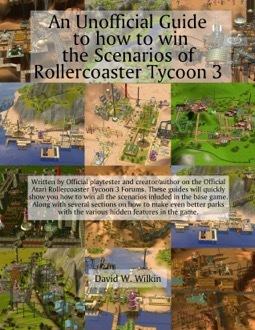D.W. Wilkin's Blog, page 50
May 29, 2016
Regency Personalities Series-Henry Richard Charles Wellesley 1st Earl of Cowley
Regency Personalities Series
In my attempts to provide us with the details of the Regency, today I continue with one of the many period notables.
Henry Richard Charles Wellesley 1st Earl of Cowley
17 June 1804 – 15 July 1884
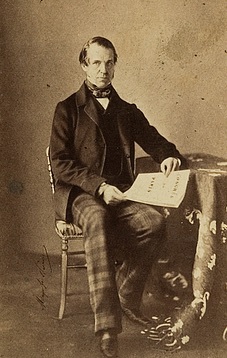
Henry Richard Charles Wellesley
Henry Richard Charles Wellesley 1st Earl of Cowley was born at Hertford Street, Mayfair, London, the eldest son of Henry Wellesley, 1st Baron Cowley, and Lady Charlotte, daughter of Charles Cadogan, 1st Earl Cadogan. He was a nephew of the 1st Duke of Wellington and the 1st Marquess Wellesley. He was educated at Eton and Brasenose College, Oxford.
Wellesley entered the diplomatic service in 1824, receiving his first important appointment in 1848, when he became Minister Plenipotentiary to the Swiss Cantons. In July 1848 he was sent on special mission to the provisional central power of Germany in Frankfurt. This was followed in June 1851 by his appointment as Envoy Extraordinary and Minister Plenipotentiary to the reinstated diet of the German Confederation, a position which he only held for a short time, as he was chosen in 1852 to succeed Lord Normanby as the British Ambassador in Paris. Lord Cowley, as Wellesley had become on his father’s death in 1847, held this important post for fifteen years, and the story of his diplomatic life in Paris cannot be separated from the general history of England and France. As Minister during the greater part of the reign of Napoleon III, he conducted the delicate negotiations between the two countries during the time of those eastern complications which preceded and followed the Crimean War, and also during the excitement and unrest produced by the attempt made in 1858 by Felice Orsini to assassinate the Emperor of the French; while his diplomatic skill was no less in evidence during the war between France and Austria and the subsequent course of events in Italy.
In 1857 he was created Viscount Dangan, in the County of Meath, and Earl Cowley. He was further honoured in 1866 when he was made a Knight of the Garter. Having assisted Richard Cobden to conclude the commercial treaty between Great Britain and France in 1860, he retired as ambassador in 1867.
Lord Cowley married on 23 October 1833 the Honourable Olivia Cecilia (d. 1885), daughter of Lord Henry FitzGerald (fourth son of the 1st Duke of Leinster) and the 20th Baroness de Ros, by whom he had three sons and two daughters, and was succeeded in his titles by his eldest son, William Cowley, Viscount Dangan. One of his daughters, Lady Feodorowna Cecilia Wellesley (1838–1920), married Francis Bertie, a British diplomat and a future British ambassador to France. In 1863 Cowley inherited the former Long family estate of Draycot Cerne in Wiltshire from his kinsman the 5th Earl of Mornington, and he lived in retirement until his death on 15 July 1884.


RAP (Regency Assembly Press) in need of Beta-Readers
Regency Assembly
Press
is looking for
Beta Readers
One novel is ready for Beta Reading
We have a continuation of Pride and Prejudice with Ms Caroline Bingley and her fortune at stake:
Do we think that Mr Hurst married his Bingley Bride without incentive? It is highly probable that Caroline Bingley, even though she has a sharp, acerbic tongue, still is in possession of a fortune and an astute fortune hunter who deciphers this may soon be on the road to, if not a happy marriage, one with financial security.
Please respond or send an email if you are interested


An Unofficial Guide to how to win the Scenarios of Rollercoaster Tycoon 3 Soaked and Wild
An Unofficial Guide to how to win the Scenarios of Rollercoaster Tycoon 3, Soaked! and WILD!
I have been a fan of this series of computer games since early in its release of the very first game. That game was done by one programmer, Chris Sawyer, and it was the first I recall of an internet hit. Websites were put up in dedication to this game where people showed off their creations, based on real amusement parks. These sites were funded by individuals, an expense that was not necessarily as cheap then as it is now. Nor as easy to program then as it might be to build a web page now.
Prima Books released game guides for each iteration of the game, Rollercoaster Tycoon 1, Rollercoaster Tycoon 2 and Rollercoaster Tycoon 3 (RCT3) but not for the expansion sets. And unlike the first two works, the third guide was riddled with incorrect solutions. As I played the game that frustrated me. And I took to the forums that Atari, the game publisher hosted to see if I could find a way to solve those scenarios that the Prima Guide had written up in error. Not finding any good advice, I created my own for the scenarios that the “Official” Guide had gotten wrong.
Solutions that if you followed my advice you would win the scenario and move on. But if you followed the
“Official” version you would fail and not be able to complete the game. My style and format being different than the folks at Prima, I continued for all the Scenarios that they had gotten right as well, though my solutions cut to the chase and got you to the winner’s circle more quickly, more directly.
My contributions to the “Official” Forum, got me a place as a playtester for both expansions to the game, Soaked and Wild. And for each of these games, I wrote the guides during the play testing phase so all the play testers could solve the scenarios, and then once again after the official release to make changes in the formula in case our aiding to perfect the game had changed matters. For this, Atari and Frontier (the actual programmers of the game) placed me within the game itself.
And for the longest time, these have been free at the “Official” Forums, as well as my own website dedicated to the game. But a short time ago, I noticed that Atari, after one of its bankruptcies had deleted their forums. So now I am releasing the Guide for one and all. I have added new material and it is over 150 pages, for all three games. It is available for the Kindle at present for $7.99. It is also available as a trade paperback for just a little bit more.
You can also find this at Smashwords, iBooks, Kobo and Barnes and Noble
(Click on the picture to purchase)
Not only are all 39 Scenarios covered, but there are sections covering every Cheat Code, Custom Scenery, the famous Small Park Competition, the Advanced Fireworks Editor, the Flying Camera Route Editor which are all the techniques every amusement park designer needs to make a fantastic park in Rollercoaster Tycoon 3.
Scenarios for RCT 3
1) Vanilla Hills
2) Goldrush
3) Checkered Flag
4) Box Office
5) Fright Night
6) Go With The Flow
7) Broom Lake
8) Valley of Kings
9) Gunslinger
10) Ghost Town
11) National Treasure
12) New Blood
13) Island Hopping
14) Cosmic Crags
15) La La Land
16) Mountain Rescue
17) The Money Pit
18) Paradise Island
Scenarios for Soaked!
1) Captain Blackheart’s Cove
2) Oasis of Fun
3) Lost Atlantis
4) Monster Lake
5) Fountain of Youth
6) World of the Sea
7) Treasure Island
8) Mountain Spring
9) Castaway Getaway
Scenarios for WILD!
1) Scrub Gardens
2) Ostrich Farms Plains
3) Egyptian Sand Dance
4) A Rollercoaster Odyssey
5) Zoo Rescue
6) Mine Mountain
7) Insect World
8) Rocky Coasters
9) Lost Land of the Dinosaurs
10) Tiger Forest
11) Raiders of the Lost Coaster
12) Saxon Farms


May 28, 2016
Regency Personalities Series-George Atwood
Regency Personalities Series
In my attempts to provide us with the details of the Regency, today I continue with one of the many period notables.
George Atwood
October 1745 – 11 July 1807
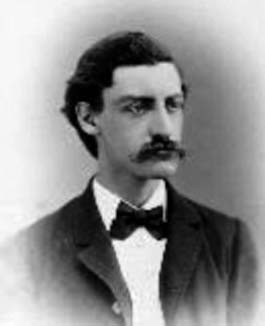
George Atwood
George Atwood was an English mathematician who invented a machine for illustrating the effects of Newton’s first law of motion. He was also a renowned chess player whose skill for recording many games of his own and of other players, including François-André Danican Philidor, the leading master of his time, left a valuable historical record for future generations.
Atwood was born in Westminster, with the date remaining unknown, but presumed to have been shortly before his baptism on 15 October 1745. He attended Westminster School and in 1765 was admitted to Trinity College, Cambridge. He graduated in 1769 with the rank of third wrangler and was awarded the inaugural first Smith’s Prize. Subsequently he became a fellow and a tutor of the college and in 1776 was elected a fellow of the Royal Society of London.
In 1784 he left Cambridge and soon afterwards received from William Pitt the Younger the office of patent searcher of the customs, which required but little attendance, enabling him to devote a considerable portion of his time to mathematics and physics.
George Atwood died unmarried in Westminster at the age of 61, and was buried there at St. Margaret’s Church.
Over a century later, a lunar crater was renamed Atwood in his honour.
Atwood’s published works, exclusive of papers contributed to the Philosophical Transactions, for one of which he obtained the Copley Medal, are as follows:
Analysis of a Course of Lectures on the Principles of Natural Philosophy (Cambridge, 1784).
Treatise on the Rectilinear Motion and Rotation of Bodies (Cambridge, 1784), which gives some interesting experiments, by means of which mechanical truths can be ocularly exhibited and demonstrated, and describes the machine, since named after Atwood, for verifying experimentally the laws of simple acceleration of motion.
Review of the Statutes and Ordinances of Assize which have been established in England from the 4th year of King John, 1202, to the 37th of his present Majesty (London, 1801), a work of some historical research.
Dissertation on the Construction and Properties of Arches (London, 1801).
Chess games recorded by Atwood were published posthumously by George Walker in London in 1835, under the name Selection of Games at Chess, actually played by Philidor and his Contemporaries. Atwood was one of a few masters that could beat Verdoni on occasion.


Space Opera Books presents ECO Agents:Save The Planet a Young Adult Adventure
First ECO Agents book available
Those who follow me for a long time know that I also write in other fields aside from Regency Romance and the historical novels I do.
A few months ago, before the end of last year and after 2011 NaNoWriMo, (where I wrote the first draft of another Regency) I started work on a project with my younger brother Douglas (All three of my brothers are younger brothers.)
The premise, as he is now an educator but once was a full on scientist at the NHI and FBI (Very cloak and dagger chemistry.) was that with the world having become green, and more green aware every week, why not have a group of prodigies, studying at a higher learning educational facility tackle the ills that have now begun to beset the world.
So it is now released. We are trickling it out to the major online channels and through Amazon it will be available in trade paperback. Available at Amazon for your Kindle, or your Kindle apps and other online bookstores. For $5.99 you can get this collaboration between the brothers Wilkin. Or get it for every teenager you know who has access to a Kindle or other eReader.
Barnes and Noble for your Nook Smashwords iBookstore for your Apple iDevices Amazon for your Kindle
Five young people are all that stands between a better world and corporate destruction. Parker, Priya, JCubed, Guillermo and Jennifer are not just your average high school students. They are ECOAgents, trusted the world over with protecting the planet.
Our Earth is in trouble. Humanity has damaged our home. Billionaire scientist turned educator, Dr. Daniel Phillips-Lee, is using his vast resources to reverse this situation. Zedadiah Carter, leader of the Earth’s most powerful company, is only getting richer, harvesting resources, with the aid of not so trustworthy employees.
When the company threatens part of the world’s water supply, covering up their involvement is business as usual. The Ecological Conservation Organization’s Academy of Higher Learning and Scientific Achievement, or simply the ECO Academy, high in the hills of Malibu, California overlooking the Pacific Ocean, is the envy of educational institutions worldwide.
The teenage students of the ECO Academy, among the best and brightest the planet has to offer, have decided they cannot just watch the world self-destruct. They will meet this challenge head on as they begin to heal the planet.
Feedback
If you have any commentary, thoughts, ideas about the book (especially if you buy it, read it and like it
May 27, 2016
Regency Personalities Series-Society of Artists of Great Britain
Regency Personalities Series
In my attempts to provide us with the details of the Regency, today I continue with one of the many period notables.
Society of Artists of Great Britain
1765-1791
Society of Artists of Great Britain was founded in London in May 1761 by an association of artists in order to provide a venue for the public exhibition of recent work by living artists, such as was having success in the long-established Paris salons. Leading members seceded from the society in 1768, a move leading directly to the formation of the Royal Academy of Arts. The society was dissolved 1791 after years of decline.
The Society of Artists of Great Britain began in 1760 as a loose association of artists, including Joshua Reynolds and Francis Hayman, who wanted greater control by artists over exhibitions of their work previously organised by William Shipley’s Society of Arts (founded in 1754). The new society organised their first exhibition in April 1760 and over one thousand visitors per day attended. The following year they held their second exhibition at Christopher Cock’s Auction Rooms in Spring Gardens, Charing Cross, and “In a conspicuous gesture they called themselves the Society of Artists of Great Britain to emphasise their identity with the ‘nation’ and to announce a clear split with Shipley’s faction.” Some 13,000 people bought a copy of the catalogue for the 1761 exhibition which featured a frontispiece designed by William Hogarth depicting Britannia watering three trees marked Painting, Sculpture and Architecture.
In 1765, the Society, then comprising 211 members, obtained a Royal Charter as the “Incorporated Society of Artists of Great Britain”.
Reynolds would later be a founder of the Royal Academy of Arts, after an unseemly leadership dispute between two leading architects, Sir William Chambers and James Paine had split the Society. Paine won, but Chambers used his strong connections with George III to create the new body – the Royal Academy of Arts was formally launched in 1769. However, the Society of Artists of Great Britain continued its schedule of exhibitions until 1791, while those who remained with the older “Society of Arts” now called themselves the “Free Society of Artists” (1761–1783).


Space Opera Books Presents A Trolling We Will Go Omnibus:The Latter Years
A Trolling We Will Go Omnibus:The Latter Years
Not only do I write Regency and Romance, but I also have delved into Fantasy.
The Trolling series, is the story of a man, Humphrey. We meet him as he has left youth and become a man with a man’s responsibilities. He is a woodcutter for a small village. It is a living, but it is not necessarily a great living. It does give him strength, muscles.
We follow him in a series of stories that encompass the stages of life. We see him when he starts his family, when he has older sons and the father son dynamic is tested.
We see him when his children begin to marry and have children, and at the end of his life when those he has loved, and those who were his friends proceed him over the threshold into death.
All this while he serves a kingdom troubled by monsters. Troubles that he and his friends will learn to deal with and rectify.
Here are the last two books together as one longer novel.
Trolling, Trolling, Trolling Fly Hides! and We’ll All Go a Trolling.
Available in a variety of formats.
For $5.99 you can get this fantasy adventure.
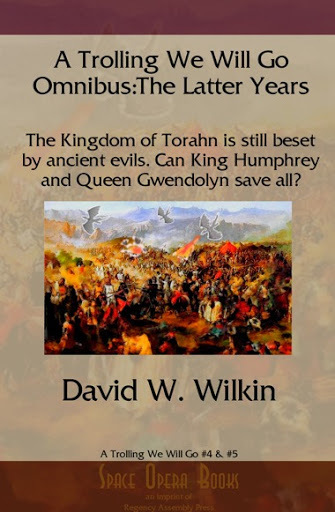
Barnes and Noble for your Nook
The stories of Humphrey and Gwendolyn. Published separately in: Trolling, Trolling, Trolling Fly Hides! and We’ll All Go a Trolling. These are the tales of how a simple Woodcutter who became a king and an overly educated girl who became his queen helped save the kingdom of Torahn from an ancient evil. Now with the aid of their children and their grandchildren.
Long forgotten is the way to fight the Trolls. Beasts that breed faster than rabbits it seems, and when they decide to migrate to the lands of humans, their seeming invulnerability spell doom for all in the kingdom of Torahn. Not only Torahn but all the human kingdoms that border the great mountains that divide the continent.
The Kingdom of Torahn has settled down to peace, but the many years of war to acheive that peace has seen to changes in the nearby Teantellen Mountains. Always when you think the Trolls have also sought peace, you are fooled for now, forced by Dragons at the highest peaks, the Trolls are marching again.
Now Humphrey is old, too old to lead and must pass these cares to his sons. Will they be as able as he always has been. He can advise, but he does not have the strength he used to have. Nor does Gwendolyn back in the Capital. Here are tales of how leaders we know and are familiar with must learn to trust the next generation to come.
Feedback
If you have any commentary, thoughts, ideas about the book (especially if you buy it, read it and like it
May 26, 2016
Regency Personalities Series-William Crotch
Regency Personalities Series
In my attempts to provide us with the details of the Regency, today I continue with one of the many period notables.
William Crotch
5 July 1775 – 29 December 1847
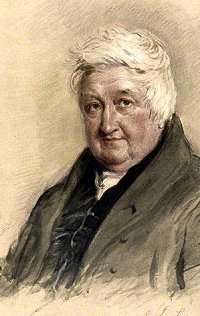
William Crotch
William Crotch was born in Norwich, Norfolk, to a master carpenter he showed early musical talent as a child prodigy. The three and a half year old Master William Crotch was taken to London by his ambitious mother, where he not only played on the organ of the Chapel Royal in St James’s Palace, but for King George III. The London Magazine of April 1779 records:
He appears to be fondest of solemn tunes and church musick, particularly the 104th Psalm. As soon as he has finished a regular tune, or part of a tune, or played some little fancy notes of his own, he stops, and has some of the pranks of a wanton boy; some of the company then generally give him a cake, an apple, or an orange, to induce him to play again…
Crotch was later to observe that this experience led him to become a rather spoiled child, excessively indulged so that he would perform.
He was for a time organist at Christ Church, Oxford, from which he was later to graduate with a Bachelor of Music degree.
His composition The Captivity of Judah was played at Trinity Hall, Cambridge, on 4 June 1789; his most successful composition in adulthood was the oratorio Palestine (1812). He may have composed the Westminster Chimes in 1793.
In 1797 Crotch became Heather Professor of Music at Oxford University, and in 1799 he acquired a doctorate in music. While at Oxford, he became acquainted with the musician and artist John Malchair, and took up sketching. He followed Malchair’s style in recording the exact time and date of each of his pictures, and when he met John Constable in London in 1805, he passed the habit along to the more famous artist.
In 1834, to commemorate the installation of the Duke of Wellington as chancellor of the University of Oxford, Crotch penned a second oratorio titled The Captivity of Judah. The 1834 work bears little resemblance to the oratorio he wrote as a child in 1789.
In 1822, Crotch was appointed to the Royal Academy of Music as its first Principal, but resigned ten years later. He spent his last years at his son’s house in Taunton, Somerset, where he died suddenly in 1847. Among his notable pupils were William Sterndale Bennett, Lucy Anderson, Stephen Codman, George Job Elvey, Cipriani Potter, and Charles Kensington Salaman.


An Unofficial Guide to how to win the Scenarios of Rollercoaster Tycoon 3
An Unofficial Guide to how to win the Scenarios of Rollercoaster Tycoon 3
I have been a fan of this series of computer games since early in its release of the very first game. That game was done by one programmer, Chris Sawyer, and it was the first I recall of an internet hit. Websites were put up in dedication to this game where people showed off their creations, based on real amusement parks. These sites were funded by individuals, an expense that was not necessarily as cheap then as it is now. Nor as easy to program then as it might be to build a web page now.
Prima Books released game guides for each iteration of the game, Rollercoaster Tycoon 1, Rollercoaster Tycoon 2 and Rollercoaster Tycoon 3 (RCT3) but not for the expansion sets. And unlike the first two works, the third guide was riddle with incorrect solutions. As I played the game that frustrated me. And I took to the forums that Atari, the game publisher hosted to see if I could find a way to solve those scenarios that the Prima Guide had written up in error. Not finding any good advice, I created my own for the scenarios that the “Official” Guide had gotten wrong.
Solutions that if you followed my advice you would win the scenario and move on. But if you followed the
“Official” version you would fail and not be able to complete the game. My style and format being different than the folks at Prima, I continued for all the Scenarios that they had gotten right as well, though my solutions cut to the chase and got you to the winner’s circle more quickly, more directly.
My contributions to the “Official” Forum, got me a place as a playtester for both expansions to the game, Soaked and Wild. And for each of these games, I wrote the guides during the play testing phase so all the play testers could solve the scenarios, and then once again after the official release to make changes in the formula in case our aiding to perfect the game had changed matters. For this, Atari and Frontier (the actual programmers of the game) placed me within the game itself.
And for the longest time, these have been free at the “Official” Forums, as well as my own website dedicated to the game. But a short time ago, I noticed that Atari, after one of its bankruptcies had deleted their forums. So now I am releasing the Guide for one and all. I have added new material and it is near 100 pages, just for the first of the three games. It is available for the Kindle at present for $2.99.
(Click on the picture to purchase)
Not only are all 18 Scenarios covered, but there are sections covering every Cheat Code, Custom Scenery, the famous Small Park Competition, the Advanced Fireworks Editor, the Flying Camera Route Editor which are all the techniques every amusement park designer needs to make a fantastic park in Rollercoaster Tycoon 3.
Scenarios for RCT 3
1) Vanilla Hills
2) Goldrush
3) Checkered Flag
4) Box Office
5) Fright Night
6) Go With The Flow
7) Broom Lake
8) Valley of Kings
9) Gunslinger
10) Ghost Town
11) National Treasure
12) New Blood
13) Island Hopping
14) Cosmic Crags
15) La La Land
16) Mountain Rescue
17) The Money Pit
18) Paradise Island


May 25, 2016
Regency Personalities Series-Admiral Sir George Cranfield-Berkeley
Regency Personalities Series
In my attempts to provide us with the details of the Regency, today I continue with one of the many period notables.
Admiral Sir George Cranfield-Berkeley
10 August 1753 – 25 February 1818
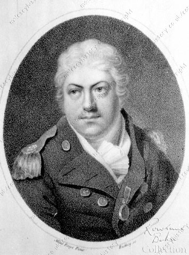
George Cranfield-Berkeley
Admiral Sir George Cranfield-Berkeley was born in 1753, the third son of Augustus Berkeley, 4th Earl of Berkeley and his courtier wife Elizabeth Drax. His father died when George was only two and the title Earl of Berkeley passed to his elder brother Frederick. George was privately educated until nine, when he attended Eton College, gaining a formal education until 1766 when he was attached to the royal yacht Mary commanded by a relative Augustus Keppel. Mary conveyed Princess Caroline Matilda to Denmark, where she was married to Christian VII of Denmark. Berkeley acted as page at her wedding.
In 1767, Berkeley was attached to the squadron under Hugh Palliser based at Newfoundland. Berkeley was there mentored by Joseph Gilbert (who later accompanied James Cook) and John Cartwright (later a prominent political reformer). With these men, Berkeley participated in a survey of Newfoundland, learning seamanship, surveying and numerous other skills in the two-year commission. In 1769, Berkeley was transferred to the Mediterranean and served in the frigate HMS Alarm under John Jervis. For the next five years, Berkeley spent time in the Mediterranean and at home, making lieutenant in 1772 but failing to be elected as MP for Cricklade and then Gloucestershire after a bitter and enormously expensive contest.
Following the outbreak of the American Revolutionary War, Berkeley served on HMS Victory, in which he commanded a gundeck at the First Battle of Ushant. Berkeley became a prominent opponent of Sir Hugh Palliser after the battle, at which Palliser was accused of refusing to obey the orders of his commanding officer, Augustus Keppel. This opposition did not prevent Berkeley gaining his first independent command the same year, when he took over the 8-gun HMS Pluto. The next year he moved to the similarly tiny HMS Firebrand and impressed his commanding officer Lord Shuldham. Shuldham’s recommendation for promotion was turned down however due to his previous involvement in the Palliser affair.
In 1780, Berkeley was appointed to HMS Fairy, a 14-gun brig under his cousin George Keppel and together they captured the American ship Mercury, taking prisoner Henry Laurens who was on a secret mission to loan money from the Dutch government. The information procured from Laurens led to a British declaration of war against the Netherlands. As another consequence, Berkeley was promoted to captain by Admiral Richard Edwards and commanded Fairy during the relief of the Great Siege of Gibraltar and further operations against American shipping from Newfoundland.
In 1781, Berkeley was given command of the frigate HMS Recovery which was placed in the squadron of Samuel Barrington. At the Second Battle of Ushant in 1782, Berkeley’s ship was engaged in the decimation of a French convoy and its escorts. As a reward, Berkeley was given the captured ship of the line HMS Pegase. Whilst aboard her he was approached by a young William Cobbet who wanted to volunteer for the navy. Berkeley dissuaded Cobbet, who later credited Berkeley with saving him from “most toilsome and perilous profession in the world”. In April 1783, Berkeley finally gained a seat in parliament, at the constituency of Gloucestershire. Berkeley would remain MP for the town for the next 27 years and took the position seriously, becoming a very important independent MP. He even attempted to bring William Pitt the Younger and Charles James Fox into an alliance, although the collapse of the scheme ended with a feud between him and Fox.
The following year, 1784 after the peace, Berkeley married Emilia Charlotte Lennox, daughter of Lord George Lennox. The marriage was a love match and Berkeley’s sister commented that they were “a pattern of domestic happiness scarcely to be equaled”. The couple had three daughters and two sons and remained an unusually tight-knit family, Berkeley using his extensive personal wealth to bring his family with him on long voyages and overseas postings. In 1786 Berkeley commanded HMS Magnificent and remained with her for three years until 1789 when he became surveyor-general of the ordnance. He left the post after the French Revolutionary Wars broke out in 1793, taking over HMS Marlborough.
Berkeley was still in command of Marlborough when she fought under Lord Howe at the Glorious First of June, fighting as part of Admiral Thomas Pasley’s van division there and at the preceding Atlantic campaign of May 1794. At the First of June, Marlborough was dismasted in close combat with several French ships and Berkeley badly wounded in the head and thigh, having to retire below after a period to staunch the bleeding. He had a long convalescence after the action but was amongst the captains selected for the gold medal commemorating the action, only awarded to those felt to have played a significant part in the victory.
Returning to service in 1795, Berkeley commanded HMS Formidable off Brest, Cadiz, Ireland and the Texel, coming ashore in 1798 to command the Sussex sea fencibles. In 1799, Berkeley was promoted rear-admiral and attached to the Channel Fleet, but the gout which had forced his first retirement returned, and Berkeley was forced to take permanent shore leave in 1800. In 1801, Berkeley increased his political interests to compensate for the loss of his naval career.
Berkeley continued building his political status during the Peace of Amiens and by it’s end Berkeley had been appointed inspector of sea fencibles, a job he undertook with vigour, conducting a fourteen-month survey of Britain’s coastal defences, which greatly improved the island’s defences. In 1806, after a shift in political power, Berkeley fell out of favour somewhat and was dispatched to the North American Station. From there, Berkeley ordered the attack by HMS Leopard on the American frigate USS Chesapeake in retaliation for American recruitment of British deserters. This action, known as the Chesapeake-Leopard Affair, helped precipitate the War of 1812.
Having embarrassed the British government with this action, Berkeley was recalled home. However, public opinion supported his orders, so Berkeley was moved to command in Lisbon in the hope he could organise the chaotic supply system for Wellington’s army in the Peninsula War. Berkeley recognised that only a dedicated and organised convoy system could keep the supply of men, food and material regular and consequently set one up. Simultaneously, he reequipped and galvanised the remnants of the Spanish Navy, rescuing several ships from capture by the French as well as used frigates to supply partisan units all along the coast of Portugal and Northern Spain.
By 1810, Wellington could truthfully say of Berkeley that “His activity is unbounded, the whole range of the business of the Country in which he is stationed, civil, military, political, commercial, even ecclesiastical I believe as well as naval are objects of his attention”. He was promoted to full admiral and made Lord High Admiral of the Portuguese Navy by the Portuguese Regent in Brazil. By 1810 he had used sailors to man coastal defences all over Spain, freeing soldiers for Wellington and also formed a squadron of river gunboats to harry French units from major rivers like the Tagus.
Berkely retired from the post in 1812, again laid low by health. He and Wellington remained good friends for the rest of their lives, and Wellington later stated that Berkeley was the best naval commander he had ever cooperated with. Berkeley’s final voyage was to return to Britain aboard HMS Barfleur. Later rewards included being made a Knight Companion of the Order of the Bath in 1813 which was converted to a Knight Grand Cross of the Order of the Bath in 1815. He was reportedly disappointed not to have been given a peerage for his long and excellent service.
Berkeley retired to a house in South Audley Street, London, where his gout continued to plague him with severe pain for the rest of his life. He spent some time during this period conversing with lifelong friend Edward Jenner, whose vaccine for smallpox Berkeley had persuaded the government to investigate, particularly with regard for the health of the navy. He was confined to bed as a result of chronic gout, and died in February 1818 at the age of 64, survived by his family.
His eldest son Sir George Berkeley was a general and father of the 7th Earl of Berkeley while his younger son Grenville Berkeley was a politician. His third daughter Mary Caroline (d. 1873) married Henry Fitzroy, 5th Duke of Grafton.





